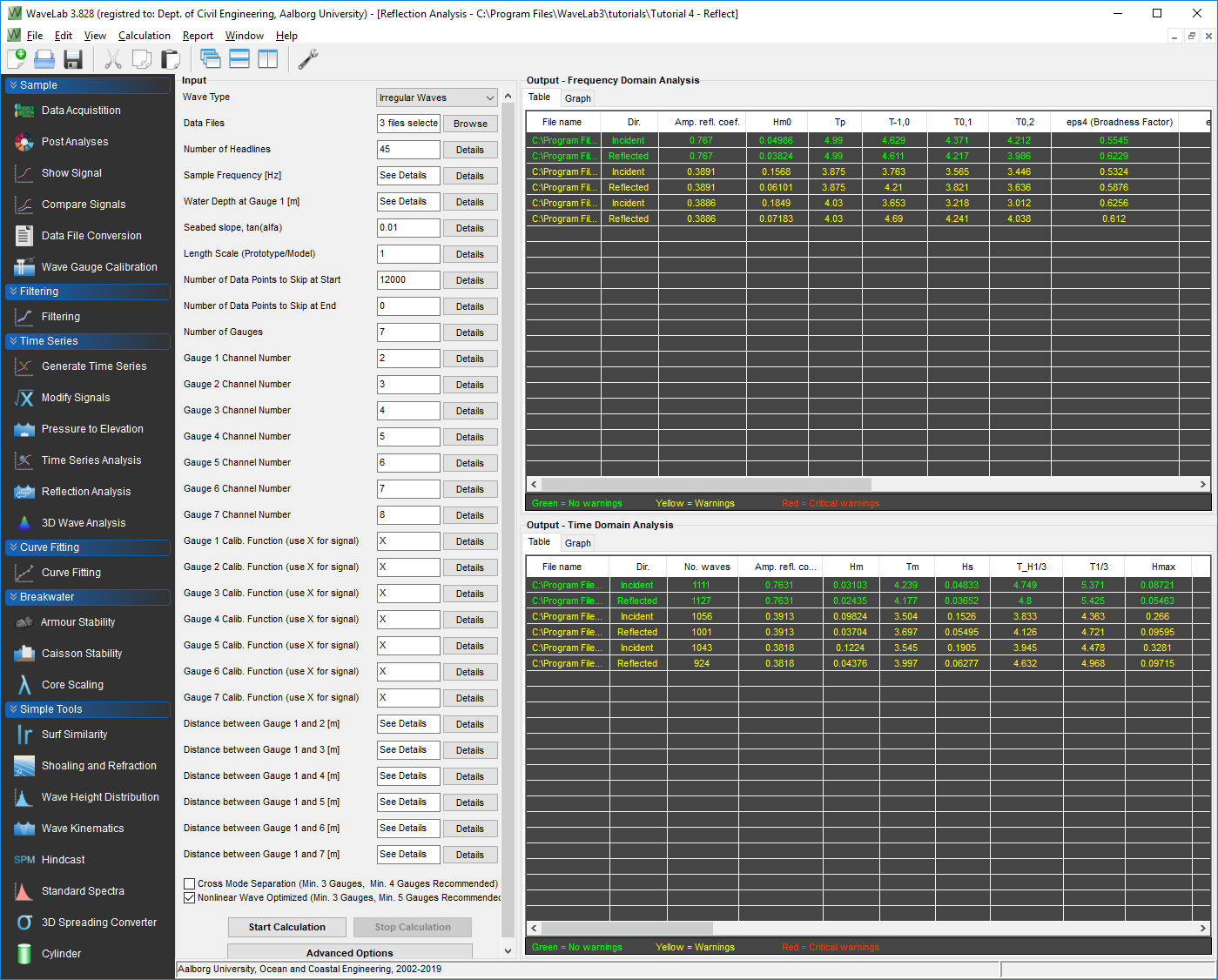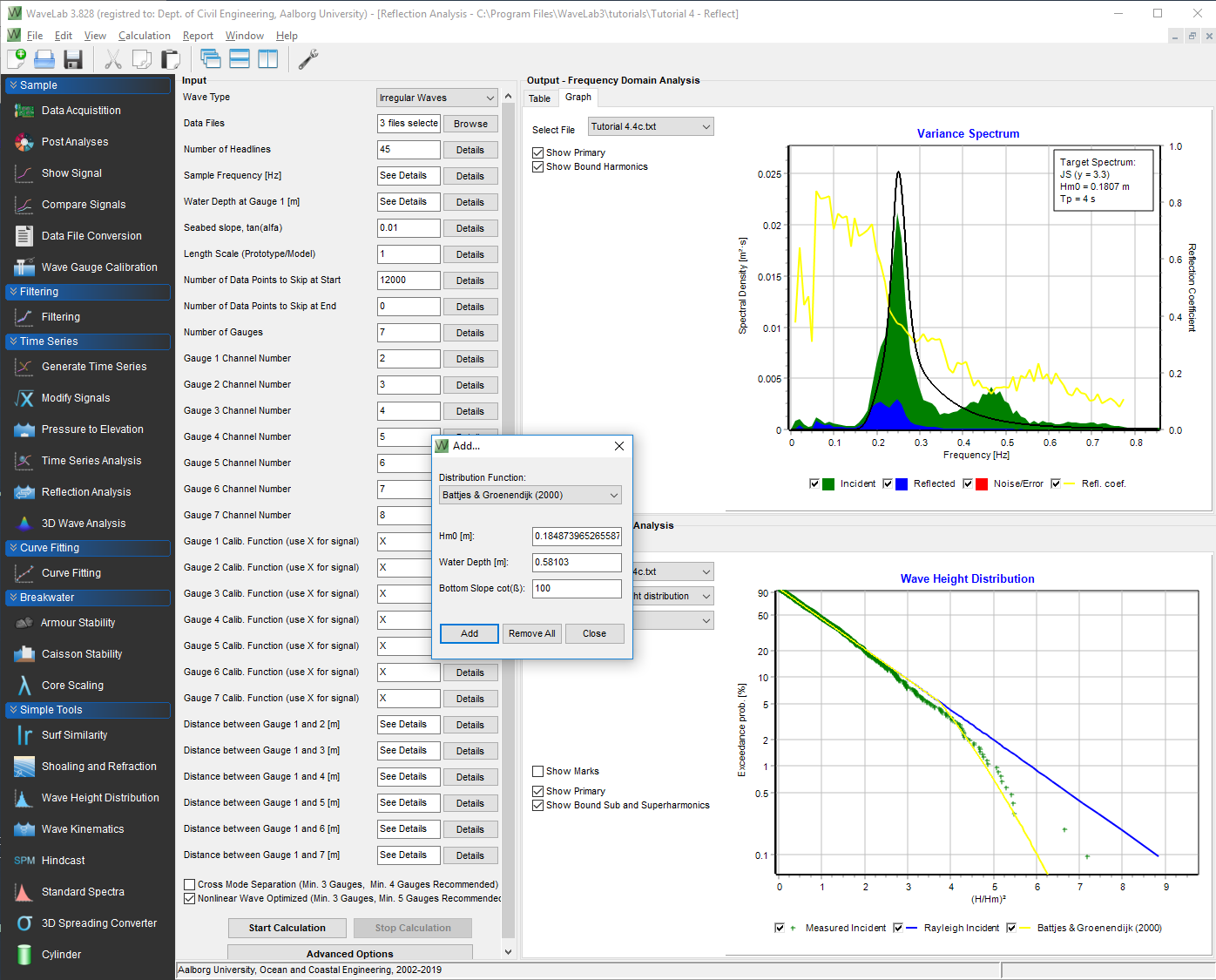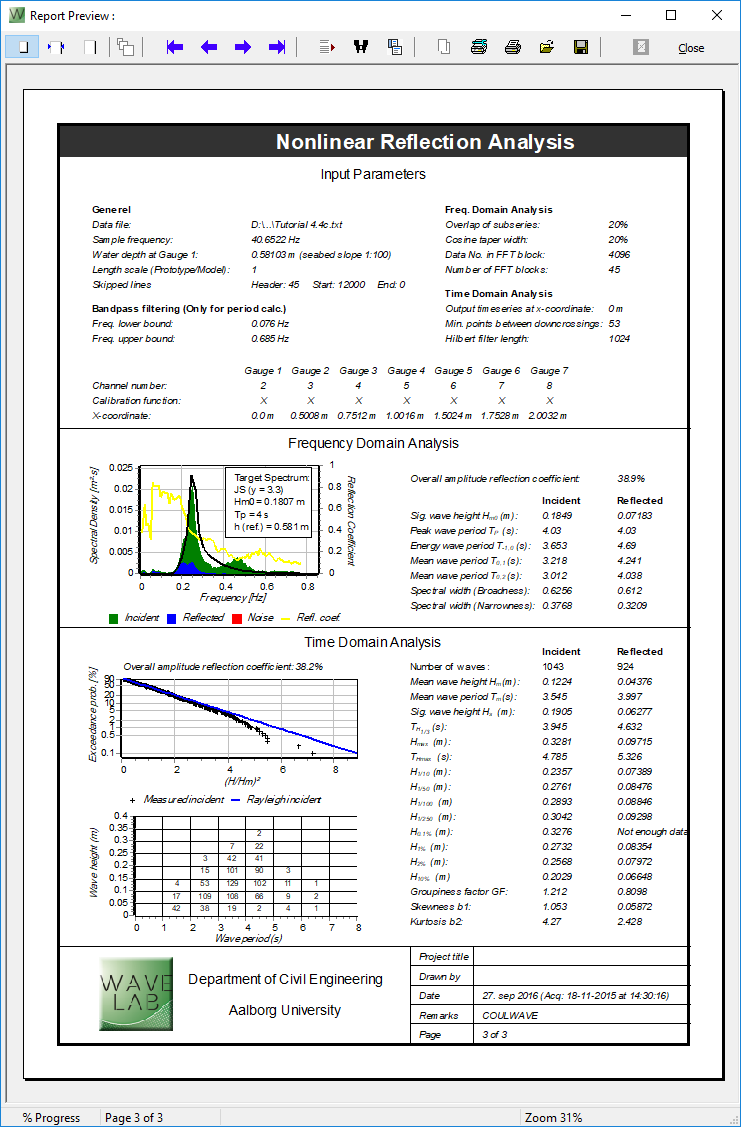The reflection analysis component support reflection analysis in frequency domain and in time domain for regular and irregular waves.
In case of regular waves separation is done using the nonlinear Lykke Andersen et al. (2016) method which is an improved version of the Lin-Huang method. This method separate the primary frequency component into incident/reflected waves and separates the higher harmonics into bound/free and incident/reflected components.
Separation of irregular waves may be done using various methods. The method by Eldrup and Lykke Andersen (2019) for nonlinear irregular waves is the state-of-the-art method available. Also the linear method of Zelt and Skjelbreia (1992) is availble (an N-gauge extension of the 3-gauge Mansard and Funke method). Separation into incident, reflected and cross-modes is alao possible using the RefCross method by Grønbech et al. (1996). All methods can use an arbitraty number of wave gauges. The recommended minimum number of gauges for the nonlinear method is five which leads to an overdetermined system so errors (noise) can be removed.
The component support processing of several data files in one operation.
Click to enlarge




